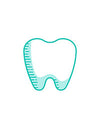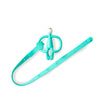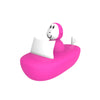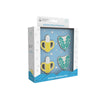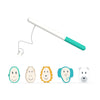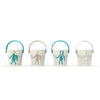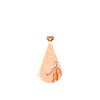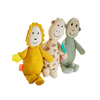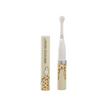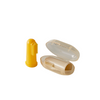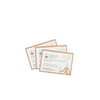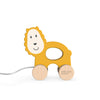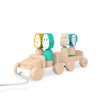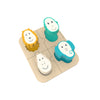4 Ways To Soothe A Teething Baby
Is your teething baby keeping you up at night? Understand how to soothe the sore gums and take care of the new teeth for your baby. Drooling, crankiness and crying will make teething an experience for both parents and babies alike. So, here's some knowledge to help relieve the stress — for you both.
How do I know my baby is teething?
Though the timing varies widely, babies often start teething around 6 months of age. The two lower front teeth (lower central incisors) normally appear first, followed by the two upper front teeth (top central incisors).
Typical signs and symptoms of teething include:
- Sore or tender gums
- Excessive drooling
- Irritability or crankiness
- Chewing on objects
- Slight increase in temperature — but no fever
So without further ado, here are five easy methods to help soothe your baby’s sore gums..
1. Teething toys
This method really takes the top spot. A study suggested that the most relief could be provided by a solid plastic ring that your baby can chew on compared with the other methods they tested. The science is that a rising tooth gets counterpressure by pushing down on a teether. This method is widely recommended, particularly chilled items, and is recorded for working.
At Matchstick Monkey, our teething toys are fun, flexible and the perfect size for tiny hands, your little ones can chew to their heart's content whilst getting right to the source of the pain. Matchstick Monkey's textured bumps help teething gels get to the right spots, no fingers needed! Shop our teething products.
2. Cuddle therapy
Yes, this is definitely a thing. Other than being the nicest name ever for a treatment, it's definitely a great way to help relieve the pain between their teeth. Apart from the obvious like cuddling them when they're in distress or feeling discomfort, just be there for them and distract them. For starters, try to distract them with playing, singing and reading - as this will help them take their mind away from the pain they are experiencing.
3. Rubbing the gums
This technique of light massage is a common method used by a lot of parents. Simply use a clean finger or wet gauze to rub your baby’s gums for one to two minutes- you could even try small circular movements too. The pressure can ease your baby's discomfort.
4. Food for chewing
This is something recommended by the NHS, too. However, they advise not to use frozen products - we would recommend using foods such as apple, carrot, bread crusts or a breadstick… as they take a while to chew. It's really important that you only use food if your baby is weaning and that you're there to make sure they're not choking.
Next steps...
It is important to note that different methods and remedies will work for different babies so give them a try and see what works for your little one. Remember, regular childhood dental care helps set the stage for a lifetime of healthy teeth and gums. For more information on teething, check out our blog posts:
When Do Babies Start Teething?
9 Steps on What To Do for A Teething Baby
Which is the Best Matchstick Monkey Teether for your little one
Good luck!

